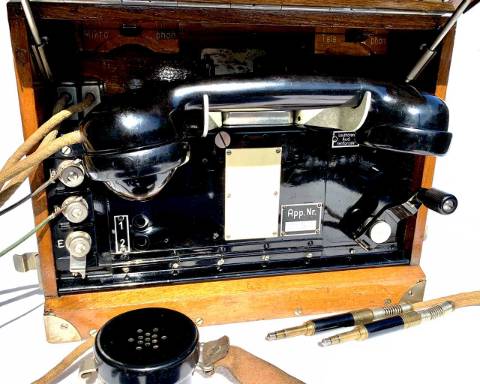Qbist Textures
Ferdinand Hérold: Symphonie 2
Les révoltés de la Bounty
Aus der sicheren Distanz des heimischen Lesesessels hat eine Meuterei und überhaupt die abenteuerliche Seefahrts-Literatur einen besonderen Charme. So auch die Kurzgeschichte von Jules Verne über die Meuterei auf der Bounty von 1789. Das PDF lässt sich gut als “booklet” ausdrucken. Viel Spass beim Lesen. (April 2020)
Verne: BountyJules Verne: Les révoltés de la Bounty, publié par Jules Hetzel à Paris en 1879. Nouvelle édition a base des matériaux hors copyright, avec une carte et quelques explications toponymiques.
Daisy Bell
Diese “poor man's” Liebeserklärung mit dem Tandem als Pointe (“a bicycle built for two”) war ein Liebling in den viktorianischen Musikhallen, eine Steilvorlage für Parodien, und 1961 das erste von einem Computer mittels Sprachsynthese gesungene Lied. Dies inspirierte einen weiteren Auftritt in Stanley Kubricks 2001: A Space Odyssey. Geschrieben wurde Daisy Bell 1892 vom britischen Liederkomponisten Harry Dacre. Der leichte Walzer hat Ohrwurm-Qualitäten und der Text lässt schmunzeln. (September 2019)
Harry Dacre: Daisy Bell (Bicycle Built for Two), written and composed in 1892, published by T.B.Harms & Co. in London 1893, newly engraved for sylphe.ch in 2019.
Flüssigkeits-Kompass RECTA
Zwar schon lange nicht mehr gebraucht und doch ein liebes Erinnerungsstück: “Flüssigkeits-Kompass” von RECTA, seit den 1940er Jahren in Biel gefertigt. Die Firma Recta wurde 1996 von Suunto übernommen, die Produktion 2008 nach Finnland verlagert. Diese
Gebrauchsanweisung(mutmasslich aus den 1950er Jahren) wurde digital restauriert
und neu gesetzt, kurz bevor sie vollständig zerfiel
(TeX source). Eine Recherche
ergab, dass Text und Abbildungen zu einem grossen Teil mit
einem Artikel von 1943 übereinstimmen (Hptm Merz:
Der neue
“RECTA”-Kompass, Seiten 23–25
in Pionier: Zeitschrift für die
Übermittlungstruppen, Heft 16 von 1943).
Darin ist einleitend zu lesen: Der neue, von der bekannten
Uhrenfabrik “Recta” in Biel hergestellte
Flüssigkeits-Kompass [...] zeichnet sich durch
robuste Konstruktion und einfache Handhabung aus.
(Juli 2013)
Armeetelephon Modell 1932
Greek with Plain TeX
Very occasionally I have to produce a greek word in
my TeX documents. The attached document helps me doing
so with only Plain TeX, Silvio Levy's greek fonts derived
from Computer Modern, and his greekmacros.
It also lists the greek alphabet, the diphthongs that
occur in greek, and the diacritical marks. I found the
placement of diacritics on upper case letters awkward,
but fortunately this can be hand-tuned (at the price
of some effort). The attached document is in German, but
at least the tables and examples should be of general use,
and the TeX source will serve as an example.
(April 2020)
Pfadi Musegg, damals
ASCII
The American Standard Code for Information Interchange (ASCII) is still useful and alive, not least as a subset of larger codes, such as the ISO 8859 series (8 bits per character) and UTF-8 (a multi-byte encoding of Unicode). Wikipedia has all the details and the history. Here is an ASCII chart. (May 2018)
| hex | x0 | x1 | x2 | x3 | x4 | x5 | x6 | x7 | x8 | x9 | xA | xB | xC | xD | xE | xF |
|---|---|---|---|---|---|---|---|---|---|---|---|---|---|---|---|---|
| 0x | NUL | SOH | STX | ETX | EOT | ENQ | ACK | BEL | BS | HT | LF | VT | FF | CR | SO | SI |
| 1x | DLE | DC1 | DC2 | DC3 | DC4 | NAK | SYN | ETB | CAN | EM | SUB | ESC | FS | GS | RS | US |
| 2x | ! | " | # | $ | % | & | ' | ( | ) | * | + | , | - | . | / | |
| 3x | 0 | 1 | 2 | 3 | 4 | 5 | 6 | 7 | 8 | 9 | : | ; | < | = | > | ? |
| 4x | @ | A | B | C | D | E | F | G | H | I | J | K | L | M | N | O |
| 5x | P | Q | R | S | T | U | V | W | X | Y | Z | [ | \ | ] | ^ | _ |
| 6x | ` | a | b | c | d | e | f | g | h | i | j | k | l | m | n | o |
| 7x | p | q | r | s | t | u | v | w | x | y | z | { | | | } | ~ | DEL |
Need it printed? ASCII Chart as a PDF file (TeX source)
A charset (character set) maps characters to numbers, and an encoding maps these numbers to one or more bytes. ASCII is both, the set of the characters shown above, and its obvious single-byte encoding (the highest bit of the byte remains zero). UTF-8 can encode all character code points of Unicode (more than a million) using one to four bytes as follows:
min max byte0 byte1 byte2 byte3
U+0000 U+007F 0xxxxxxx (7 bits)
U+0080 U+07FF 110xxxxx 10xxxxxx (11 bits)
U+0800 U+FFFF 1110xxxx 10xxxxxx 10xxxxxx (16 bits)
U+10000 U+10FFFF 11110xxx 10xxxxxx 10xxxxxx 10xxxxxx (21 bits)
This encoding has the following useful properties:
(1) the encoding sorts the same as the encoded code points,
(2) the encoding introduces no extra null bytes,
(3) ASCII is a subset, and
(4) resynchronisation after an encoding error is always
possible because leading bytes are always different from
continuation bytes. All this means that classical functions
like strcmp and even strstr work
with UTF-8 as they did with ASCII strings.
(Update April 2021)



